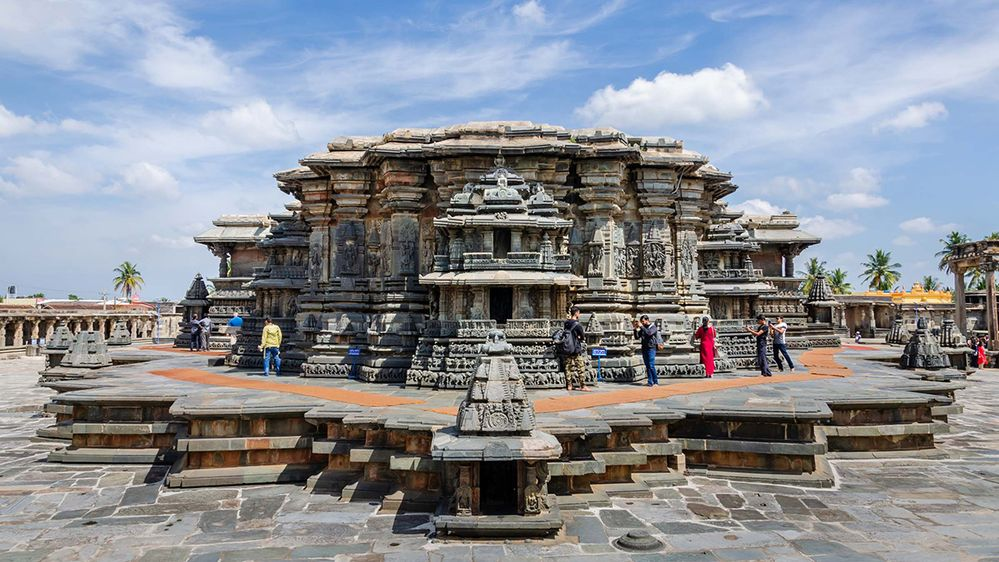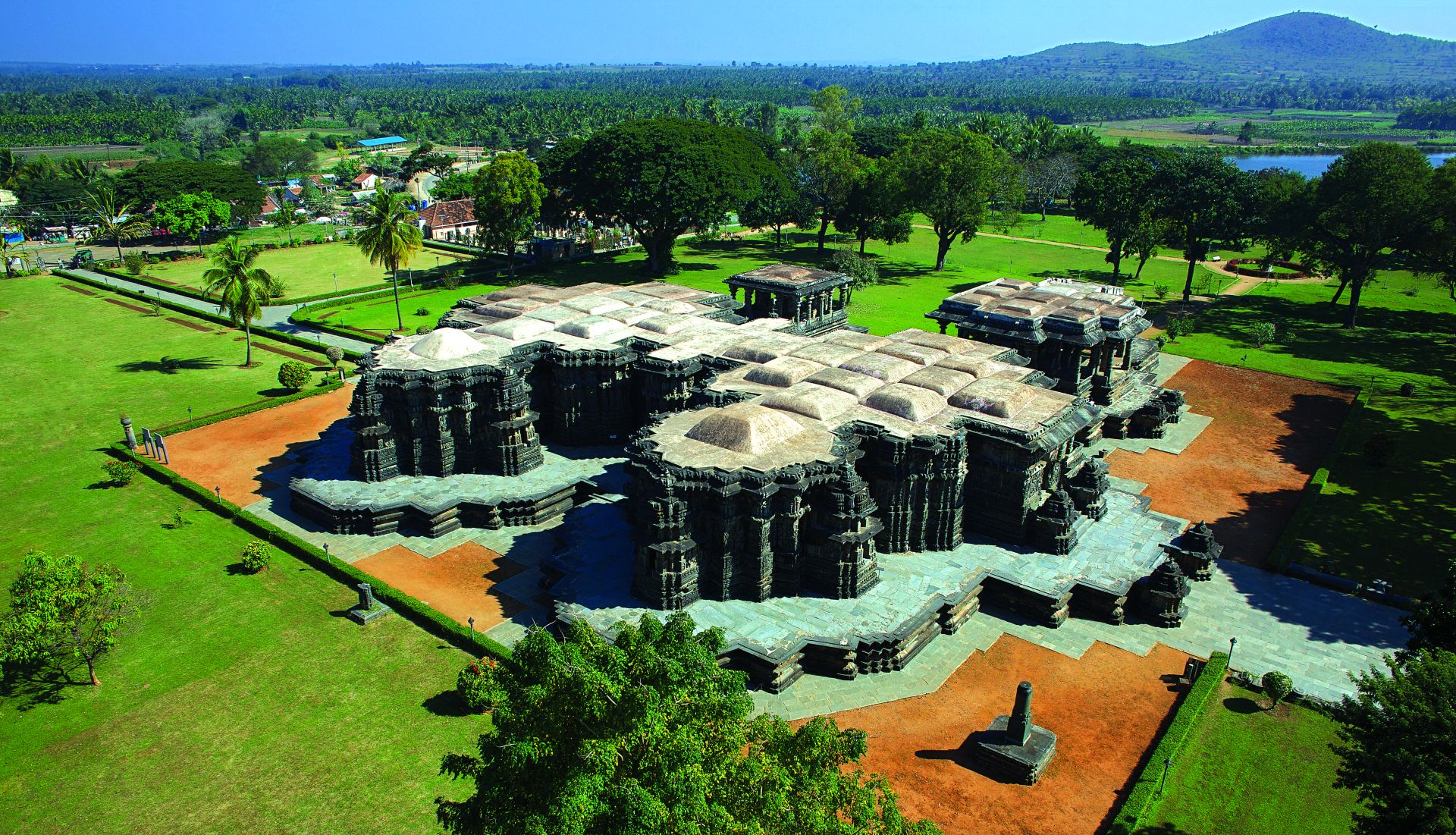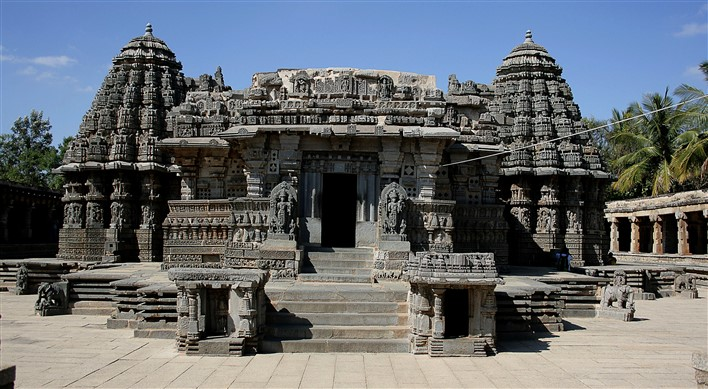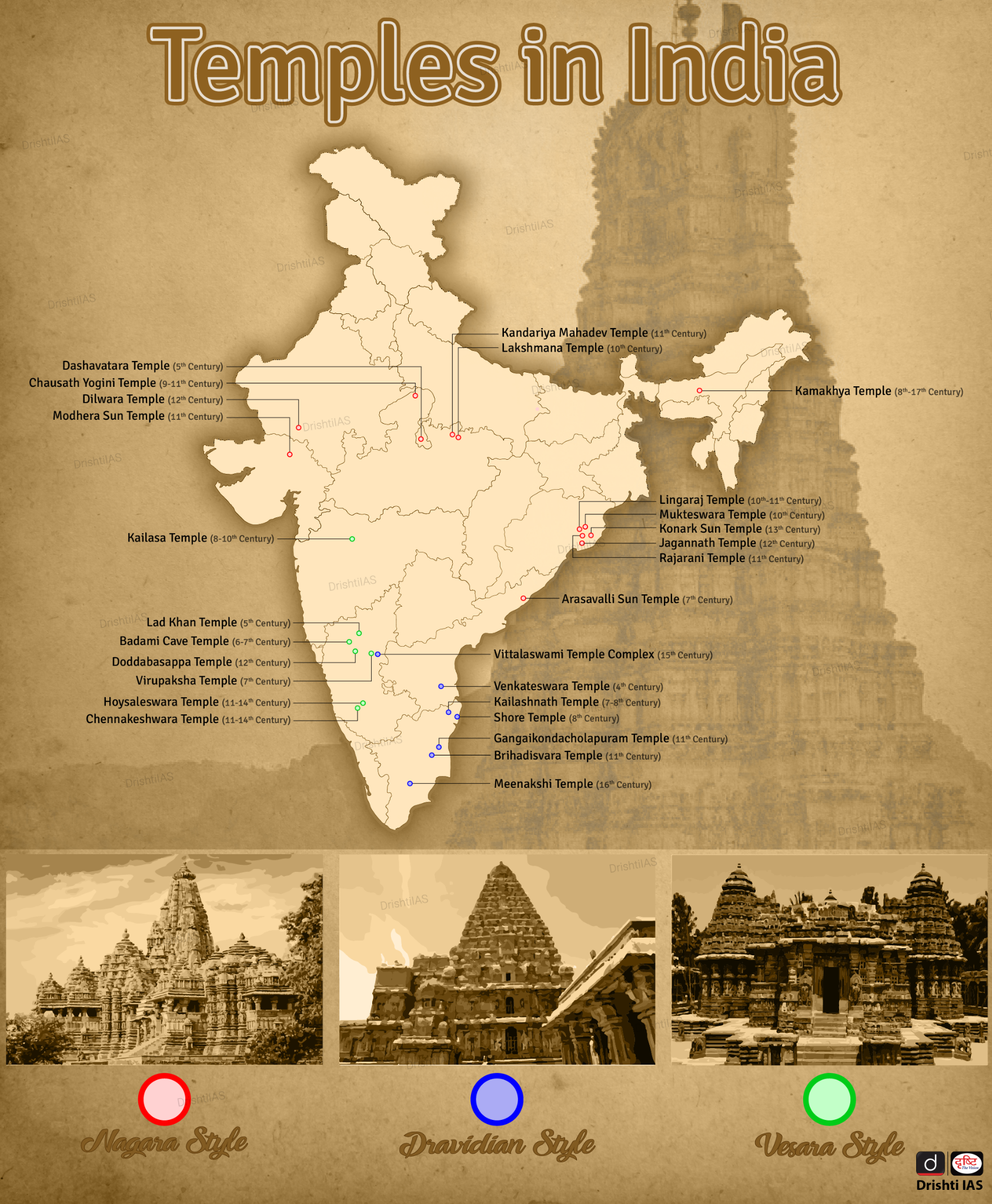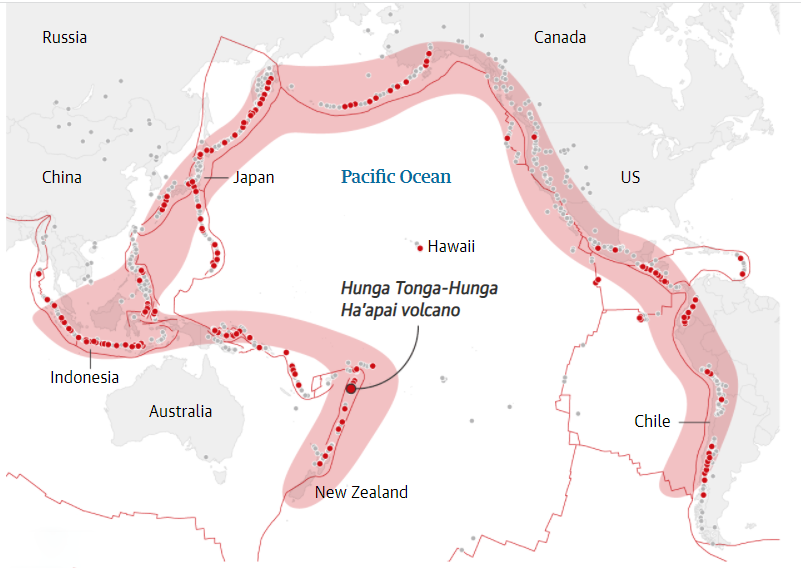Infographics
Indian Polity
Debate over the Words Socialist and Secular in Constitution
For Prelims: Preamble of the Constitution of India, 42nd Amendment Act, 1976, Emergency.
For Mains: Debate over the Words Socialist and Secular in Constitution.
Why in News?
Recently, some of the Members of the Lok Sabha have claimed that the words “Socialist” and “Secular” were omitted in the New Copies of the Preamble of the Constitution of India.
- These two words were originally not a part of the Preamble. They were added by The Constitution (42nd Amendment) Act, 1976 during the Emergency imposed by then Prime Minister Indira Gandhi.
What is the Preamble of the Indian Constitution?
- About:
- Every Constitution has a philosophy. The philosophy underlying the Constitution of India was summed up in the Objectives Resolution, which was adopted by the Constituent Assembly on 22nd January, 1947.
- The Preamble of the Constitution puts in words the ideal contained in the Objectives Resolution.
- It serves as an introduction to the Constitution, and contains its basic principles and goals.
- The Preamble of the Constitution that Commenced in 1950 read:
- “WE, THE PEOPLE OF INDIA, having solemnly resolved to constitute India into a SOVEREIGN DEMOCRATIC REPUBLIC and to secure to all its citizens:
- JUSTICE, social, economic and political;
- LIBERTY of thought, expression, belief, faith and worship;
- EQUALITY of status and of opportunity; and to promote among them all
- FRATERNITY assuring the dignity of the individual and the unity of the Nation;
- IN OUR CONSTITUENT ASSEMBLY this 26th day of November, 1949, do HEREBY ADOPT, ENACT AND GIVE TO OURSELVES THIS CONSTITUTION.”
- “WE, THE PEOPLE OF INDIA, having solemnly resolved to constitute India into a SOVEREIGN DEMOCRATIC REPUBLIC and to secure to all its citizens:
- Insertion of the words Socialist and Secular:
- The words "Socialist" and "Secular" were added to the Preamble through the Constitution (42nd Amendment) Act, 1976, during the period of Emergency under Prime Minister Indira Gandhi's government.
- The insertion of "socialist" aimed to emphasize socialism as a goal and philosophy of the Indian state, with a focus on eradicating poverty and adopting a unique form of socialism that involved nationalization only in specific sectors where necessary.
- The inclusion of "secular" reinforced the idea of a secular state, treating all religions equally, maintaining neutrality, and not endorsing any particular religion as a state religion.
What is the Debate Over Removing Socialist and Secular Words from the Preamble?
- Political Ideology and Representation:
- Those advocating for the removal argue that the words "socialist" and "secular" were inserted during the Emergency in 1976.
- They believe this was an imposition of a particular political ideology and goes against the principles of representation and democratic decision-making.
- Original Intent and Constitution's Philosophy:
- Critics argue that the original Preamble, as adopted in 1950, didn't include these words. They emphasize that the Constitution's philosophy already encompassed the ideas of justice, equality, liberty, and fraternity without explicitly mentioning socialism and secularism.
- They argue that these values were always implicit in the Constitution.
- Concerns of Misinterpretation:
- Some critics express concerns that the words "socialist" and "secular" might be misinterpreted or misused, potentially leading to policies and actions that deviate from their original intent.
- They argue for a more neutral and flexible approach in the Preamble.
- Social Implications:
- The presence or absence of these words can have implications for public policy, governance, and societal discourse.
- The term "secular" is particularly significant in a country with a diverse religious population, and its removal might raise concerns about the state's commitment to religious neutrality.
Way Forward
- Foster a well-informed and inclusive public discourse on the implications of these terms in the Preamble. This should involve academia, civil society, political parties, and citizens to understand various perspectives and concerns.
- Facilitate a structured debate within constitutional bodies, such as Parliament, to deliberate on the significance, interpretation, and historical context of the words "socialist" and "secular" in the Preamble. Encourage thorough discussions to analyze the implications of any potential amendment.
- Establish an independent committee of constitutional experts, legal scholars, historians, and sociologists to study the historical context, constitutional philosophy, and legal implications of the words "socialist" and "secular" in the Preamble. Their findings can provide valuable insights.
Legal Insights
UPSC Civil Services Examination Previous Year Questions (PYQ)
Q. What was the exact constitutional status of India on 26th January, 1950? (2021)
(a) A Democratic Republic
(b) A Sovereign Democratic Republic
(c) A Sovereign Secular Democratic Republic
(d) A Sovereign Socialist Secular Democratic Republic
Ans: (b)
Ethics
Fostering Ethical AI
For Prelims: Fostering Ethical AI, Ethical Artificial Intelligence (AI), Machine Learning (ML), AI facial recognition, Generative AI.
For Mains: Fostering Ethical AI, Need for establishing Ethical AI.
Why in News?
Recently, some business leaders emphasized the Imperative of collaboration among governments, industry, and ecosystem players to develop Ethical Artificial Intelligence (AI).
What is Artificial Intelligence (AI)?
- About:
- AI is the ability of a computer, or a robot controlled by a computer to do tasks that are usually done by humans because they require human intelligence and discernment.
- Although there is no AI that can perform the wide variety of tasks an ordinary human can do, some AI can match humans in specific tasks.
- AI is the ability of a computer, or a robot controlled by a computer to do tasks that are usually done by humans because they require human intelligence and discernment.
- Characteristics & Components:
- The ideal characteristic of AI is its ability to rationalize and take actions that have the best chance of achieving a specific goal. A subset of AI is Machine Learning (ML).
- ML is a method of teaching computers to learn from data, without being explicitly programmed. It involves using algorithms to analyze and draw insights from data, and then using those insights to make predictions or decisions.
- Deep Learning (DL) techniques enable this automatic learning through the absorption of huge amounts of unstructured data such as text, images, or video.
- The ideal characteristic of AI is its ability to rationalize and take actions that have the best chance of achieving a specific goal. A subset of AI is Machine Learning (ML).
What is Ethical AI?
- About:
- Ethical AI, also known as Moral or Responsible AI, refers to the development and deployment of AI systems in a manner that aligns with ethical principles, societal values, and human rights.
- It emphasizes the responsible use of AI technology to ensure that it benefits individuals, communities, and society as a whole, while minimizing potential harms and biases.
- Key Aspects of Ethical AI:
- Transparency and Explainability: AI systems should be designed and implemented in a way that their operations and decision-making processes are understandable and explainable to users and stakeholders. This promotes trust and accountability.
- Fairness and Bias Mitigation: Ethical AI aims to mitigate biases and ensure fairness in AI algorithms and models to prevent discrimination against certain individuals or groups based on factors like race, gender, ethnicity, or socioeconomic status.
- Privacy and Data Protection: Ethical AI upholds individuals' right to privacy and advocates for the secure and responsible handling of personal data, ensuring consent and compliance with relevant privacy laws and regulations.
- Accountability and Responsibility: Developers and organizations deploying AI systems should be accountable for the outcomes of their AI technologies. Clear lines of responsibility and mechanisms for addressing and rectifying errors or harmful impacts are essential.
- Robustness and Reliability: AI systems should be robust, reliable, and perform consistently across different situations and conditions. Measures should be in place to handle adversarial attempts to manipulate or subvert the AI system.
- Benefit to Humanity: AI should be developed and used to enhance human well-being, solve societal challenges, and contribute positively to society, economies, and the environment.
What are the Ethical Concerns related to Artificial Intelligence?
- Risk of Unemployment:
- The hierarchy of labor is concerned primarily with automation. Robotics and AI companies are building intelligent machines that perform tasks typically carried out by low-income workers: self-service kiosks to replace cashiers, fruit-picking robots to replace field workers, etc.
- Moreover, the day is not far when many desk jobs will also be edged out by AI, such as accountants, financial traders, and middle managers.
- Exacerbating Inequalities:
- Using artificial intelligence, a company can drastically cut down on relying on the human workforce, and this means that revenues will go to fewer people.
- Consequently, individuals who have ownership in AI-driven companies will make all the money. Also, AI could compound digital exclusion.
- Further, investment is likely to shift to countries where AI-related work is already established, widening gaps among and within countries.
- Tech Addiction:
- Technological addiction is the new frontier of human dependency. AI has already become effective at directing human attention and triggering certain actions.
- When used right, this could evolve into an opportunity to nudge society towards more beneficial behavior.
- However, in the wrong hands, it could prove detrimental.
- Discriminating Robots:
- We shouldn’t forget that AI systems are created by humans, who can be biased and judgemental.
- It can lead to AI facial recognition and surveillance technology to discriminate against people of color and minorities.
- AI Turning against Humans:
- What if artificial intelligence itself turned against humans, imagine an AI system that is asked to eradicate cancer in the world.
- After a lot of computing, it spits out a formula that does, in fact, bring about the end of cancer – by killing everyone on the planet.
What are the Global Standards for Artificial Intelligence Ethics?
- In 2021, the Recommendation on the Ethics of Artificial Intelligence was adopted by UNESCO.
- It aims to fundamentally shift the balance of power between people, and the businesses and governments developing AI.
- UNESCO members have agreed to use affirmative action to make sure that women and minority groups are fairly represented on AI design teams.
- The recommendation also underscores the importance of the proper management of data, privacy and access to information.
- It calls on member states to ensure that appropriate safeguards are devised for the processing of sensitive data and effective accountability and redress mechanisms are provided.
- The Recommendation takes a strong stance that
- AI systems should not be used for social scoring or mass surveillance purposes
- Attention must be paid to the psychological and cognitive impact that these systems can have on children.
- Member states should invest and promote not only digital, media and information literacy skills, but also socio-emotional and AI ethics skills.
- UNESCO is also in the process of developing tools to help assess the readiness in the implementation of the recommendations.
Way Forward
- AI models should be designed in a way that allows for a clear understanding of their functioning and decision-making processes.
- AI models should be developed with a strong focus on data privacy and ensuring that individuals' sensitive information is handled appropriately and securely.
- There is a need for governance norms developed in collaboration with industries and stakeholders rather than arbitrary legislation, pointing to advanced thinking and ongoing discussions at the government level.
- There is a need for clarity regarding foundational models and data usage in AI systems.
- Ethical AI can be a transformative force, capable of empowering over a billion dreams and bridging the digital divide, not only in India but globally.
- AI and Generative AI must reach diverse populations, being accessible in various languages and regions.
UPSC Civil Services Examination, Previous Year Questions (PYQs)
Prelims
Q. With the present state of development, Artificial Intelligence can effectively do which of the following? (2020)
- Bring down electricity consumption in industrial units
- Create meaningful short stories and songs
- Disease diagnosis
- Text-to-Speech Conversion
- Wireless transmission of electrical energy
Select the correct answer using the code given below:
(a) 1, 2, 3 and 5 only
(b) 1, 3 and 4 only
(c) 2, 4 and 5 only
(d) 1, 2, 3, 4 and 5
Ans: (b)
Mains
Q. “The emergence of the Fourth Industrial Revolution (Digital Revolution) has initiated e-Governance as an integral part of government”. Discuss. (2020)
International Relations
The Khalistan shadow on India-Canada Ties
For Prelims: The Khalistan shadow on India-Canada Ties, Khalistani Movements, Operation Blue Star (1984), Sikh extremism, Redicalism.
For Mains: The Khalistan shadow on India-Canada ties, its Implication on Bilateral Relations.
Why in News?
Recently, the tensions between India and Canada escalated when the Canadian Prime Minister alleged Indian involvement in the killing of a Khalistani Leader designated as a terrorist by India, in Surrey in June 2023.
- India rejected these allegations and accused Canada of sheltering Khalistani Extremists.
What is the Khalistan Movement?
- The Khalistan movement is a fight for a separate, sovereign Sikh state in present day Punjab (both India and Pakistan).
- The demand has resurfaced many times, most prominently during a violent insurgency in the 1970s and 1980s which paralysed Punjab for over a decade.
- The movement was crushed in India following Operation Blue Star (1984) and Operation Black Thunder (1986 and 1988), but it continues to evoke sympathy and support among sections of the Sikh population, especially in the Sikh diaspora in countries such as Canada, the UK, and Australia.
What are the Recent Anti-India Activities in Canada?
- Recent Anti-India Activities:
- Operation Bluestar Anniversary Parade (June 2023): In Brampton, Ontario, a parade seemed to celebrate the assassination of former Prime Minister Indira Gandhi, displaying a blood-stained figure and advocating revenge for the attack on Darbar Sahib.
- Pro-Khalistan Referendum (2022): Sikhs for Justice (SFJ), a pro-Khalistan organization, conducted a so-called "referendum" on Khalistan in Brampton, claiming significant support.
- Sanjh Savera Magazine (2002): In 2002, the Toronto-based Punjabi-language weekly Sanjh Savera greeted Indira Gandhi's death anniversary with a cover illustration celebrating her murder, glorifying those responsible.
- The magazine received government advertisements and is now a prominent daily newspaper in Canada.
- Indian Concerns Over such Activities:
- Indian diplomats based in Canada have on numerous occasions said that Canada’s failure to tackle "Sikh extremism", and the constant harassment of Indian diplomats and officials by Khalistanis, is a major foreign policy stress point.
- The Indian Prime Minister (PM) raised strong concerns about Sikh protests in Canada with the Canadian PM on the sidelines of a G20 summit in New Delhi.
- Canada has paused talks on a proposed trade treaty with India.
How will Khalistan Radicalism Impact India-Canada Relations?
- Strained Diplomatic Relations:
- The allegations and counter-allegations can strain diplomatic ties, affecting the overall relationship between the two nations.
- Trust and confidence may be eroded, making it difficult to collaborate on various bilateral and international issues.
- Security Implications for India:
- The Khalistan movement is considered a security threat to India’s Sovereignty getting grounds in Foreign Countries.
- In April 2023, India arrested a Sikh separatist Leader for allegedly reviving calls for Khalistan, sparking fears of new violence in Punjab.
- Earlier in 2023, India hit out at Canada for allowing a float in a parade depicting the assassination of Indira Gandhi, perceiving this to be a glorification of Sikh separatist violence.
- It is also concerning for India about frequent demonstrations and vandalism by Sikh separatists and their supporters at Indian diplomatic missions in Canada, Britain, the U.S. and Australia causing threat to Indian Sovereignty and Integrity.
- The Khalistan movement is considered a security threat to India’s Sovereignty getting grounds in Foreign Countries.
- Impact on Trade and Economy:
- Trade relations might suffer as the accusations could affect business partnerships and investment flows between India and Canada.
- Businesses may exercise caution or reassess their engagement due to the heightened political tension.
- India-Canada bilateral trade in goods reached approximately USD 8.2 billion in 2022, showing a 25% growth compared to 2021.
- The services sector was emphasised as a significant contributor to the bilateral relationship, with bilateral services trade valued at around USD 6.6 billion in 2022.
- Reduced Cooperation on Key Issues:
- Cooperation on critical global challenges such as climate change, counter-terrorism, and international security might be adversely impacted.
- Both countries may find it challenging to align their positions and work together effectively on these shared concerns.
- Potential Travel and People-to-People Impact:
- The escalating tensions could affect travel and interactions between Indian and Canadian citizens, making it more cumbersome or less appealing to travel to each other's countries.
- Reassessment of Immigration Policies:
- Canada may review or tighten its immigration policies, especially concerning individuals associated with Khalistani separatism, in response to India's concerns about sheltering such elements.
- Long-Term Bilateral Cooperation:
- The recent tensions could have a lasting effect on long-term bilateral cooperation and partnerships.
- Rebuilding trust and reestablishing a constructive relationship might require substantial efforts and time.
- India established diplomatic relations with Canada in 1947. India and Canada have a long-standing bilateral relationship based on shared democratic values, the multi-cultural, multi-ethnic and multi religious nature of two societies and strong people-to-people contacts.
What is the History of Khalistan Movement and Terrorism in Canada?
- Early Khalistan Movement in Canada:
- The Khalistan movement traces back to Surjan Singh Gill's establishment of the 'Khalistan government in exile' office in Vancouver in 1982, with limited local Sikh support.
- Connection to Punjab Militancy:
- The militancy in Punjab during the 1980s had repercussions in Canada.
- Canada's handling of individuals like Talwinder Singh Parmar, accused of terrorism in Punjab, was criticized by India.
- Air India Bombing (1985):
- Canada witnessed a horrific act of terrorism with the bombing of Air India Kanishka in June 1985, orchestrated by the Babbar Khalsa, a Khalistani outfit.
What are the Previous Instances of India-Canada Tensions?
- Early Tensions (1948):
- The strained relations trace back to 1948 when Canada supported a plebiscite in Kashmir, reflecting early discord.
- 1998 Nuclear Tests:
- Canada’s recall of its high commissioner to India following India's nuclear tests marked a significant downturn in relations.
- Recent Developments:
- PM of Canada expressions of concern regarding India's response to farmers' protests and his Liberal Party's alliance with the New Democratic Party (NDP), which endorsed the Khalistan Referendum, further fueled tensions.
Way Forward
- The Indian government should invest in the economic development of Punjab and ensure that it gets its fair share of resources, opportunities, and benefits.
- The government should also address the problems of unemployment, drug abuse, environmental degradation, and agrarian distress that plague Punjab.
- The Indian government should ensure justice for the victims and survivors of the violence and human rights violations that occurred during the Khalistan movement.
- Both countries should maintain open lines of communication at various levels of government to discuss concerns and grievances openly.
- Engage in constructive and respectful dialogue to address the Khalistan issue, clarifying each other's perspectives, and finding common ground.
Indian Heritage & Culture
Hoysala Temples Now India's 42nd World Heritage Site
For Prelims: UNESCO’s World Heritage List, Hoysala Temple Complex, Hoysala Dynasty
For Mains: Impact of UNESCO World Heritage status on the preservation and promotion of the temples.
Why in News?
The Sacred Ensembles of the Hoysala, the famed Hoysala temples of Belur, Halebid and Somanathapur in Karnataka have been added to the United Nations Educational, Scientific and Cultural Organization (UNESCO) World Heritage list. This inclusion marks the 42nd UNESCO World Heritage Site in India
- Recently, Santiniketan, which is a town located in the Birbhum district of West Bengal, was also included in UNESCO’s World Heritage List.
Note:
- The 'Sacred Ensembles of the Hoysala' have been on UNESCO's Tentative list since April 15, 2014. The other heritage sites in Karnataka which got into the UNESCO list are Hampi (1986) and Pattadakal (1987).
What are the Key Facts About the Hoysala Temples?
- Chennakeshava Temple in Belur:
- It was built by Hoysala King Vishnuvardhana to commemorate his victory over the Cholas in 1116 AD.
- Beluru (also known earlier as Velapuri, Velur and Belapur in olden times) is situated on the banks of the Yagachi River and was one of the capitals of the Hoysala Empire.
- It is a star-shaped temple, dedicated to Lord Vishnu, and is the main temple in the temple complex at Belur.
- It was built by Hoysala King Vishnuvardhana to commemorate his victory over the Cholas in 1116 AD.
- Hoysaleshwara Temple in Halebid:
- This twin-shrined temple is perhaps the largest Shiva temple built by the Hoysalas.
- The sculptures depict various aspects of Shiva, as well as scenes from the Ramayana, the Mahabharata, and the Bhagavata Purana.
- Halebid has a walled complex containing three Jaina basadi (temples) of the Hoysala period as well as a stepped well.
- Keshava Temple of Somanathapur:
- It is a beautiful Trikuta Temple dedicated to Lord Krishna in three forms-Janardhana, Keshava and Venugopala.
- The main Keshava idol is missing, and the Janardhana and Venugopala idols are damaged.
- It is a beautiful Trikuta Temple dedicated to Lord Krishna in three forms-Janardhana, Keshava and Venugopala.
What are the Key Facts about Hoysala Architecture?
- About:
- The Hoysala Temples were built during the 12th and 13th centuries CE, showcasing the unique architectural and artistic brilliance of the Hoysala dynasty.
- All these three Hoysala temples are protected monuments of the Archaeological Survey of India (ASI).
- The Hoysala Temples were built during the 12th and 13th centuries CE, showcasing the unique architectural and artistic brilliance of the Hoysala dynasty.
- Key Elements:
- Mantapa
- Vimana
- Sculpture
- Characteristics:
- These temples are not just architectural wonders but also repositories of the cultural and historical heritage of the Hoysala dynasty.
- Hoysala temples are sometimes called hybrid or vesara as their unique style seems neither completely dravida nor nagara, but somewhere in between. They are easily distinguishable from other medieval temples.
- Hoysala architecture is known for its distinctive blend of Bhumija style prevalent in Central India, the Nagara traditions of northern and western India, and the Karnataka Dravida modes favored by the Kalyani Chalukyas.
- Contain multiple shrines grouped around a central pillared hall and laid out in the shape of an intricately-designed star.
- They are made out of soapstone which is a relatively soft stone, the artists were able to carve their sculptures intricately. This can be seen particularly in the jewellery of the gods that adorn their temple walls.
Hoysala Dynasty
- Origin and Rise:
- The Hoysalas governed areas spanning Karnataka and Tamil Nadu for over three centuries, with Sala serving as the dynasty's founder.
- The first kings came from the hills northwest of Dorasamudra (present-day Halebid), which became their capital in about 1060.
- Political History:
- The Hoysalas were feudatories of the Chalukyas of Kalyana, also known as the Western Chalukya Empire.
- The most notable rulers of the Hoysala dynasty were Vishnuvardhana, Veera Ballala II, and Veera Ballala III.
- Vishnuvardhana (also known as Bittideva) was the greatest king of the Hoysala dynasty.
- Religion and Culture:
- The Hoysala dynasty was a tolerant and pluralistic society that patronized various religions, such as Hinduism, Jainism, and Buddhism.
- King Vishnuvardhana was initially a Jain but later converted to Vaishnavism under the influence of the saint Ramanuja.
UPSC Civil Services Examination Previous Year Question (PYQ)
Prelims
Q. The Nagara, the Dravida and the Vesara are the (2012)
(a) three main racial groups of the Indian subcontinent
(b) three main linguistic divisions into which the languages of India can be classified
(c) three main styles of Indian temple architecture
(d) three main musical Gharanas prevalent in India
Ans: c
Mains
Q. Chola architecture represents a high watermark in the evolution of temple architecture. Discuss (2013)
Governance
SHREYAS Scheme
For Prelims: SHREYAS, National Overseas Scheme for SCs, Scheduled Castes (SC)
For Mains: Role of financial assistance and scholarships in bridging educational disparities in India
Why in News?
The Scholarships for Higher Education for Young Achievers Scheme (SHREYAS) initiative has been a cornerstone in India's efforts to empower students from Scheduled Castes (SC) and Other Backward Classes (OBC) by providing them access to quality education.
What is SHREYAS?
- About:
- SHREYAS is an umbrella scheme, under the Ministry of Social Justice & Empowerment.
- SHREYAS aims for the Educational Empowerment of OBC & Economically Backward Class (EBC) students by way of awarding fellowships (financial assistance) in obtaining quality higher education and interest subsidy on educational loans for overseas studies.
- Sub-Schemes:
- The umbrella scheme of "SHREYAS" comprises 4 central sector sub-schemes.
- Free Coaching Scheme for SCs and OBCs:
- Objective:
- Provide coaching of high quality to economically disadvantaged SCs and OBCs for competitive exams and admission to technical and professional institutions.
- Income Ceiling: Family income under the scheme is capped at 8 lakhs per annum.
- Slot Allocation: 3500 slots are allotted annually.
- Gender Inclusivity: 30% of slots are reserved for females in both categories.
- Allocation Ratio: The SC: OBC ratio is 70:30, ensuring equitable access.
- Outcomes: From 2014-15 to 2022-23, 19,995 beneficiaries have benefited through this.
- Top-Class Education for SCs:
- Objective: Recognize and promote quality education among SC students, covering studies beyond the 12th class.
- Income Ceiling: The family income limit is set at 8 lakhs per annum.
- Coverage: 266 higher education institutes, including prestigious institutions like IIMs, IITs, and NITs.
- Scholarship: Under the scheme, tuition fee, non-refundable charges, academic allowance and other expenses are provided.
- Outcomes: From 2014-15 till 2022-23 21,988 beneficiaries have benefited through this.
- National Overseas Scheme for SCs:
- Objective: Under the National Overseas Scheme for SCs, financial assistance is provided to the selected students from SCs; De-notified, Nomadic and Semi-Nomadic Tribes; landless agricultural labourers and traditional artisan categories, for pursuing masters and Ph.D. level courses abroad.
- Eligibility: A student with a total family income including the candidate should be less than Rs. 8 lakhs per annum, who has more than 60% marks in the qualifying examination, is below 35 years of age and who secured admission in the top 500 QS ranking foreign Institutes/ Universities.
- Scholarship: Total tuition fee, maintenance and contingency allowance, visa fee, to and fro air passage etc. are provided to the awardees.
- Outcomes: From 2014-15 to 2022-23, 950 beneficiaries have benefited through this.
- National Fellowship for SC Students:
- Aim: This fellowship supports SC students pursuing M.Phil/Ph.D. degrees in Sciences, Humanities, and Social Sciences in Indian Universities/Institutions/Colleges recognized by the University Grants Commission (UGC).
- Eligibility: Candidates who have qualified for the National Eligibility Test (NET-JRF) or Junior Research Fellows for Science stream qualifying UGC-Council of Scientific and Industrial Research (UGC-CSIR) Joint Test.
- Allocation: The scheme provides for 2000 new slots per year (500 for the science stream and 1500 for the Humanities and Social Sciences).
- Objective:
What are the Other Education Schemes in India?
- National Programme on Technology Enhanced Learning.
- Beti Bachao Beti Padhao
- PM SHRI Schools
- National Means cum Merit Scholarship (NMMS)
- Swachh Vidyalaya Abhiyan
- Eklavya Model Residential Schools
UPSC Civil Services Examination, Previous Year Question (PYQ)
Prelims
Q. Which of the following provisions of the Constitution does India have a bearing on Education? (2012)
- Directive Principles of State Policy
- Rural and Urban Local Bodies
- Fifth Schedule
- Sixth Schedule
- Seventh Schedule
Select the correct answer using the codes given below:
(a) 1 and 2 only
(b) 3, 4 and 5 only
(c) 1, 2 and 5 only
(d) 1, 2, 3, 4 and 5
Ans- (d)
Mains
Q1. How have digital initiatives in India contributed to the functioning of the education system in the country? Elaborate on your answer. (2020)
Q2. Discuss the main objectives of Population Education and point out the measures to achieve them in India in detail. (2021)
Geography
Hunga Tonga-Hunga Ha'apai Volcano
For Prelims: Hunga Tonga-Hunga Ha'apai , Pinatubo , Krakatoa, Tambora, Samalas,Greenhouse Gases , El - Nino , Paris Agreement , IPCC, Cooling credits ,Sun dimming.
For Mains: Effect Of Volcano On Global Warming , Types of volcano
Why in News?
The Year 2023 has recorded unprecedented temperatures. Scientists believe one of the reasons for this may be an underwater volcanic eruption of Hunga Tonga-Hunga Ha'apai in the South Pacific in 2022.
What are the Key Points About Hunga Tonga-Hunga Ha'apai Volcano ?
- The Hunga Tonga-Hunga Ha’apai volcano is in the western South Pacific Ocean, west of the main inhabited islands in the Kingdom of Tonga.
- It is one of 12 confirmed submarine volcanoes along the Tofua Arc, a segment of the larger Tonga-Kermadec volcanic arc.
- The Tonga-Kermadec arc formed as a result of subduction of the Pacific Plate beneath the Indo-Australian Plate.
- It is an undersea Volcano consisting of two small uninhabited islands, Hunga-Ha’apai and Hunga-Tonga.
How will the Earth’s Temperature be Affected by the Hunga Tonga Volcano?
- Generally, massive volcanic eruptions usually reduce temperatures because they spit out vast amounts of sulfur dioxide, which form sulfate aerosols that can reflect sunlight back into space and cool Earth’s surface temporarily, generally referred as Sun dimming.
- However, the Tonga eruption had another effect because it occurred underwater. The eruption of Hunga Tonga-Hunga Ha'apai in 2022 produced a plume 58 km high, and produced the biggest atmospheric explosion ever recorded.
- The Hunga Tonga-Hunga Ha'apai eruption is peculiar because, in addition to causing the largest increase in stratospheric aerosol in decades, it also injected vast amounts of water vapor into the stratosphere.
- Water vapor is a natural greenhouse gas that absorbs solar radiation and traps heat in the atmosphere.
- The aerosol and water vapor impact the climate system in opposing ways, but several studies have proposed that, due to its larger and more persistent water vapor plume, the eruption could have a temporary net surface warming effect.
How have Previous Volcanic Eruptions Impacted the Climate Globally?
- In the past 2,500 years, there have been about eight even bigger eruptions, according to the Intergovernmental Panel on Climate Change (IPCC),
- Among them, Tambora in Indonesia in 1815 led to a "year without a summer" - with failed harvests from France to the United States.
- Even worse, the eruption of Samalas in Indonesia around 1257 led to famines and may have kicked off the Little Ice Age, an unusually cool period that lasted until the 19th century.
What are the Types of Volcanoes ?
- In general, Volcanoes can be divided on the basis of Type of Eruption & Periodicity of Eruption.
- Based on Type of Eruption: The nature of the eruption mainly depends on the viscosity of the magma and are of two types:
- Basic: The basic magma are dark coloured like basalt, rich in iron and magnesium but poor in silica. They travel far and generate broad shield volcanoes.
- Acidic: These are light-coloured, of low density, and have a high percentage of silica and therefore it makes a familiar cone volcano shape.
- Based on frequency of Eruption:
- Active volcanoes: They erupt frequently and are mostly located around the Ring of Fire.
- E.g.: Mount Stromboli is an active volcano and it produces so many gas clouds that it is called the Lighthouse of the Mediterranean.
- Dormant Volcano: These are not extinct but have not erupted in recent history. The dormant volcanoes may erupt in future.
- E.g: Mount Kilimanjaro, located in Tanzania, also the highest mountain in Africa, is known to be a dormant Volcano.
- Extinct or inactive volcanoes have not worked in the distant geological past.
- In most cases the crater of the Volcano is filled with water making it a lake. E.g.: Deccan Traps, India.
- Active volcanoes: They erupt frequently and are mostly located around the Ring of Fire.
- Based on Type of Eruption: The nature of the eruption mainly depends on the viscosity of the magma and are of two types:
Conclusion
- Any number of phenomena can sway global temperatures, from El Niño conditions in the Pacific Ocean to wildfires in Siberia.
- The Hunga Tonga-Hunga Ha'apai eruption may nudge the temperature past 1.5°C of warming, but that doesn’t mean the Paris Agreement has failed yet; the event demonstrated how close the world is to its agreed-upon tipping point.
UPSC Civil Services Examination, Previous Year Question (PYQ)
Q. Mention the global occurrence of volcanic eruptions in 2021 and their impact on regional environment. (2021)
Rapid Fire
Rapid Fire Current Affairs
Three years of the Abraham Accords
- The Abraham Accords are a series of agreements to normalize relations between Israel and normalize relations between Israel and several Arab countries, including the UAE, Bahrain, Morocco, and Sudan, mediated by the United States.
- The accords were signed in 2020 and marked a historic breakthrough in the Arab-Israeli conflict.
- The Accords fostered normalisation and peace by bridging cultural, religious, and linguistic differences, connecting people beyond borders.
- The Accords laid the foundation for expanded regional and multinational cooperation, leading to economic opportunities for India.
- Following the Abraham Accords, I2U2 Group was formed, comprising Israel, India, UAE, and the U.S., focusing on critical areas such as water, energy, transportation, space, health, and food security.
Read more: Israel, UAE and Bahrain Abraham Accord
Green Nudges
- A study conducted in China has shed light on the positive environmental impact of implementing "green nudges" in online food delivery platforms.
- Green nudges are interventions that encourage people to act more sustainably. They are a relatively new policy tool that aims to encourage pro-environmental behaviour.
- By defaulting to "no disposable cutlery" and rewarding customers with "green points," this simple change led to a 648% increase in no-cutlery orders, offering potential benefits for both the environment and consumer behaviour.
- The study estimated that over 18 months in Shanghai, more than 225.33 million sets of single-use cutlery (SUCs) were reduced, potentially preventing 4,506.52 metric tonnes of waste and saving 56,333 trees.
- India's leading online food delivery platform, Zomato, introduced similar nudges, leading to a substantial reduction in cutlery waste.
Read more: Behavioural Economics for New India
Paryushan Parv, A jain Festival
Paryushan 2023, a significant festival for the Jain community. It is a time for spiritual growth, with fasting, meditation, and purification rituals. Devotees attend speeches, practice non-violence, and seek forgiveness for their sins.
- The festival is believed to have originated in the 6th century BC when the Jain teacher Mahavira taught his followers to abstain from violence and to focus on spiritual purity.
- For both Shvetambara, who observe the ritual over eight days, and Digambars, for whom the festival lasts 10 days, this is a time for introspection, reflection and purification. It takes place in the middle of the rainy season.
- They also do svadhyaya, self-study. Paryushan makes one stay close to one's soul, reflect on one's shortcomings, seek punishment for wrong-doings and vow to minimize one's mistakes.
Read More: Jainism
Truenat Test to Detect Nipah
Kerala has been accorded sanction by the Indian Council for Medical Research (ICMR) to use Truenat test to diagnose Nipah.
- Truenat test uses a portable, smart chip-based, battery-operated RT-PCR (Reverse Transcriptase-Polymerase Chain reaction) kit to detect the presence of the virus in a sample.
- Truenat is the first kit in India to receive Emergency Use Authorization (EUA) by the Drug Controller General of India (DCGI) for conducting Nipah virus tests.
- Truenat can be used in hospitals that have level 2 biosafety facilities, where there are certain strict protocols in place to prevent contamination of samples. Truenat can help conduct tests faster, detect if there is an outbreak, and set preventive measures faster.
Read More: Nipah Virus


